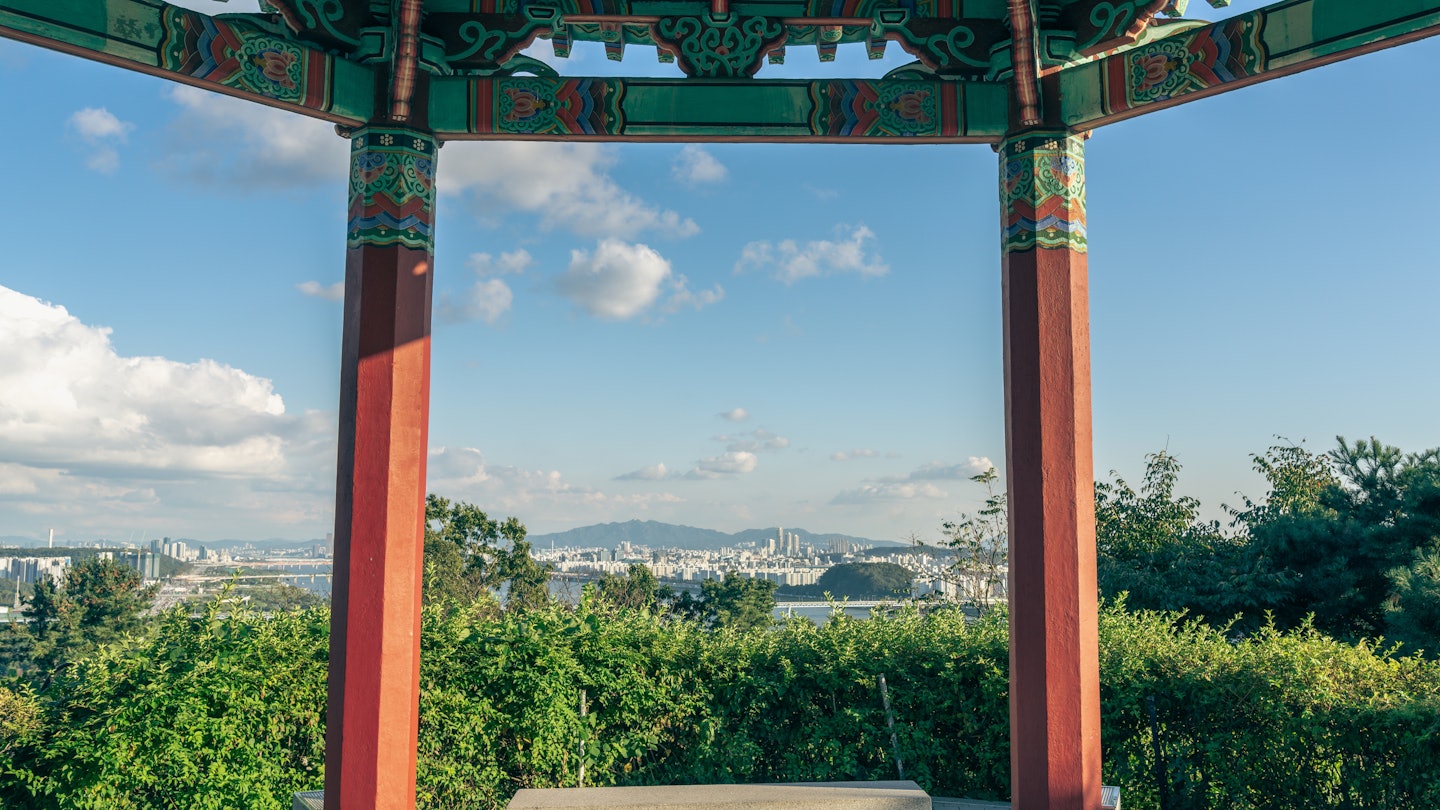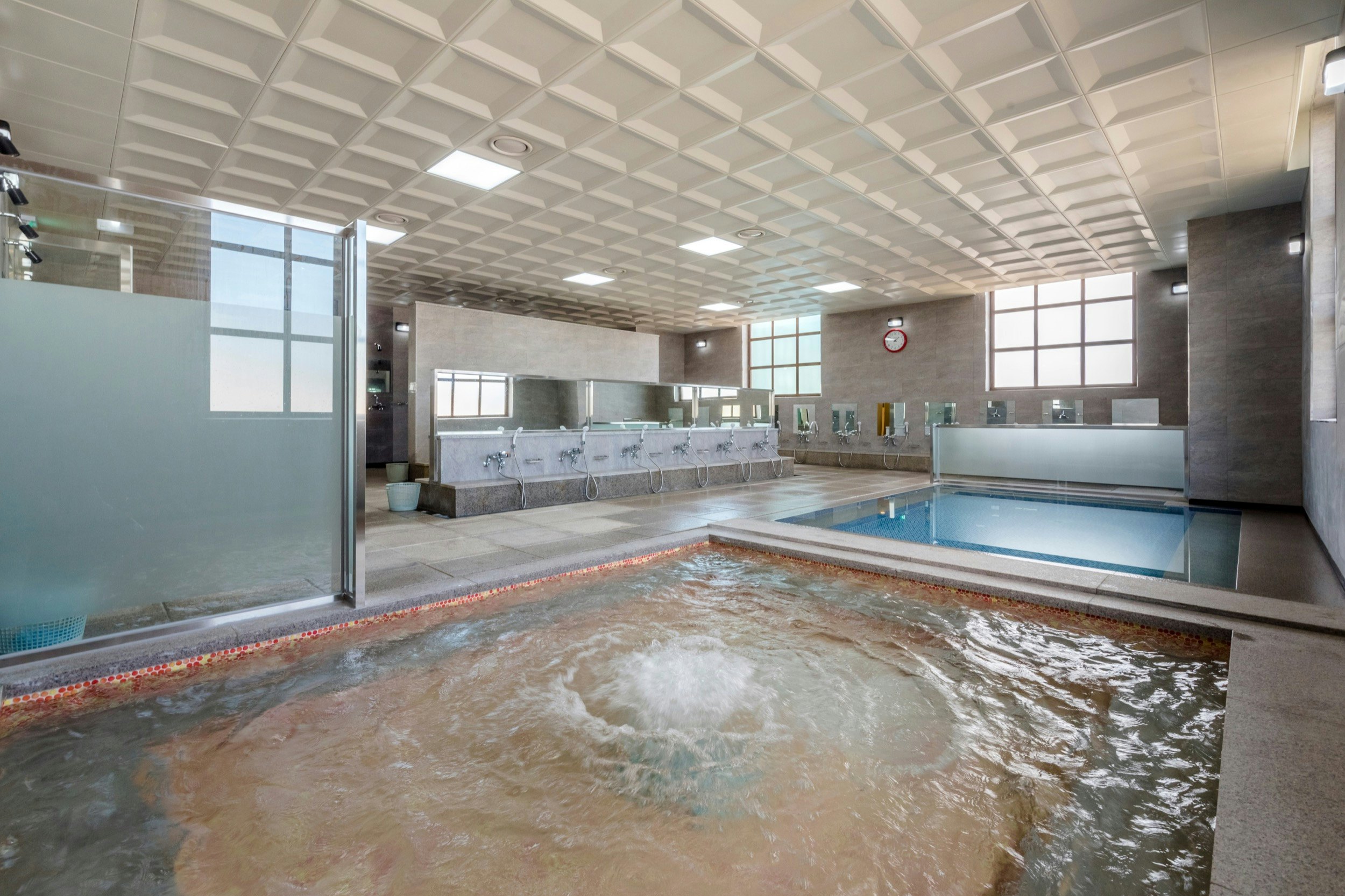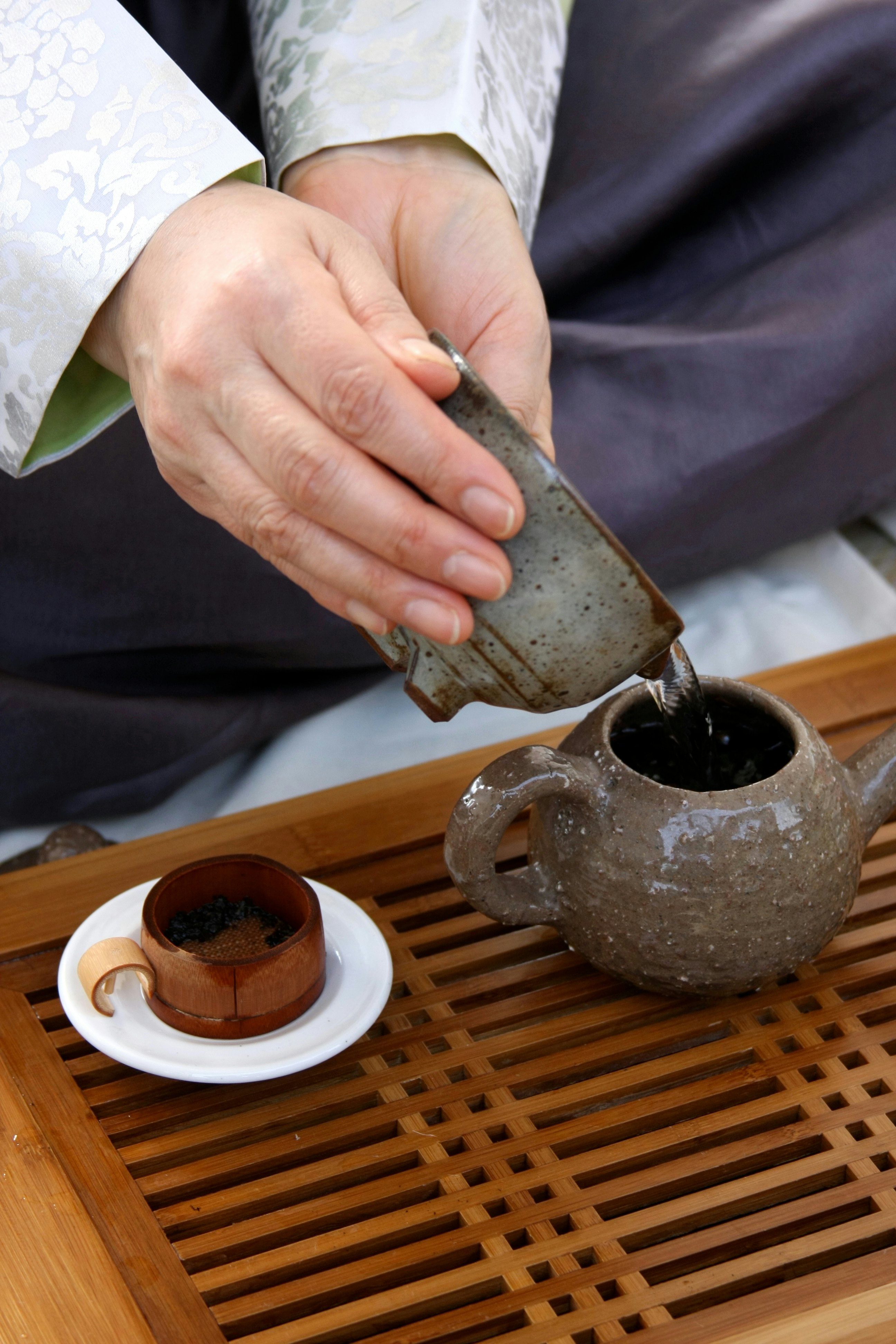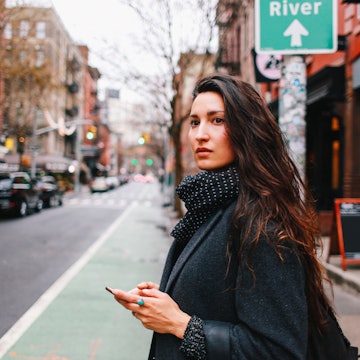

Seoul has plenty of places to relax. Sanga Park/Shutterstock
Some travel to experience the beauty of a place, others travel to acquire beauty for themselves. Seoul, South Korea, offers both. The beauty of this mountainous Korean capital city — with its quiet, leafy neighborhoods filled with low-slung traditional hanok houses and bustling modern districts marked by sparkling skyscrapers — is matched by the more than 9 million residents. From traditional Korean bathhouses, known as jjimjilbangs, to mindful tea ceremonies to vegetarian Buddhist temple restaurants, the city is teeming with wellness experiences. Then there are the countless cosmetic clinics, skincare shops and spas, frequented by locals and international celebrities alike.
The growing popularity of K-Beauty — a term used to describe the beauty industry built on Korean skincare and cosmetic products and treatments — attracted 605,768 travelers to South Korea for cosmetic procedures in 2023. But visitors who spend all their time in cosmetic clinics risk missing out on the real Korean conception of beauty, which values inner virtue in addition to outward appearance. Read on for experiences that offer the chance to glow from the inside out.
Where to glow
Glow-up at a holistic spa
As a half-Korean Canadian who prefers to avoid invasive procedures, I’m most interested in experiencing the Korean approach to beauty that emphasizes self-care. “Korea’s holistic view of beauty nurtures outer radiance through inner balance,” says Erica Choi, founder of the Korean skincare line Superegg. This holistic approach is best experienced at a spa like Chaum, which goes beyond the typical North American spa menu to provide a vast array of services all under one roof. From hair restoration to skin treatments, the spa is popular among international celebrities and locals alike.
For me, their TheraSpa is where I want to spend the day. They have all the facilities you could want — a hammam bath, Vichy shower and hydrotherapy bath. Their facial treatments are a standout for micro-needling, rejuvenating facial masks and facial massages that will leave you feeling like jelly. Unlike cosmetic clinics in the city that focus on aesthetic procedures, I like that the choose-your-own-adventure style of Seoul’s holistic spas doesn’t make me feel like I’m opting out of beauty treatments.

Rejuvenate at a bathhouse
I still remember my first visit to a Korean bathhouse — known as a jjimjilbang — in Seoul. As a teen, I was intimidated by large groups of Korean women socializing in the shared communal pools and the aggressive body treatments I witnessed take place in the open for everyone to see. Since the 15th century, Korean saunas have been a site not only of bathing and rejuvenation but socializing. Today, you can still find this convivial energy in the many inexpensive jjimjilbangs around the city. Many high-end hotels, such as the Four Seasons Seoul, have tourist-friendly jjimjilbangs that offer a bit more guidance and privacy.
“For first-timers, it’s important to know that there’s a range of options: from traditional bathhouses where all clothes are removed, to more modern spas where bathing suits or clothes are worn,” explains Dr. Eunice Park, a plastic surgeon and founder of Korean aesthetic spa in New York, AIREM. If you’re feeling brave, opt for a Korean scrub. The intense full-body exfoliating treatment involves several body masks and scrubs that will leave you feeling born anew.

Ground in a tea ceremony and sound bath
Korean tea ceremonies (known as darye) date back to the Goryeo dynasty, when Buddhist monks used tea in their spiritual practices. Since then, the tea ceremony has become an integral part of Korean culture, through its emphasis on mindfulness, respect for nature, communal harmony and aesthetic beauty. The traditional ceremony involves a thorough ritual of brewing tea — typically using natural materials in an outdoor setting — with a relaxed atmosphere, meant to encourage mindfulness and social bonding.
Many places around the city to partake in a traditional Korean tea ceremony, but for a more contemporary experience, head to Ritual Mind for a Korean tea ceremony combined with a sound bath in a traditional hanok house. As a passionate tea-drinker, the meditative tea ceremony inspired me to make my own daily tea preparation and drinking a more mindful experience.
Get an actual glow-up
Seoul’s vast array of aesthetic beauty clinics can be overwhelming. For exosome therapy — a popular treatment that boosts regeneration, hydration and elasticity by delivering growth factors to the skin — Dr. Park recommends Dermatology On Demand. For laser treatments, Dr. Park heads to LaserOptek, where their laser can read all skin types. And for post-treatment care, Dr. Park recommends OxygenCeuticals. “Their unique formulations and post-treatment devices are not only soothing but also supercharge the skin’s healing process — making them a go-to in my practice for patients seeking that signature K-beauty glow after clinical treatments."
Although I skipped the more invasive treatments these cosmetic clinics offer, witnessing the Korean dedication to regular, even weekly, maintenance has made me incorporate more skincare into my daily routine back home.
Where to nourish
With a diverse and ever-evolving food scene, Seoul is my favorite city in the world to eat. But easily overlooked is Korean food’s symbiosis with wellness. The typical Korean meal is a colorful spread of nutrient-rich dishes — from fermented kimchi to nourishing bubbling broths to wholesome grains like purple rice. Mindfulness and connection is also an essential part of each meal, according to Choi. “Many of Seoul’s restaurants, teahouses and coffee shops are thoughtfully designed to support rest and reconnection — spaces where the pace naturally slows, encouraging presence, reflection and restoration."
Balwoo Gongyang
In Korea, temple food refers to the vegan cuisine prepared in Korean Buddhist temples. While most temple food is found in the countryside outside Seoul, Balwoo Gongyang is one of the few serving the Buddhist cuisine in the city. The Michelin-starred restaurant serves an elaborate five-course lunch where each course is based on a different Buddhist principle. The dammi (starter) course of deep-fried mushrooms coated in gochujang, for example, emphasizes noticing the texture of the food, while the youmi (main) course presents a beautiful array of dishes. Think Buddhist temple-style kimchi, soybean paste soup and steamed millet rice designed to ease physical fatigue and mental stress.
Kwonsooksoo
Another Michelin-starred restaurant offering a contemporary take on traditional Korean cuisine is Kwonsooksoo. The minimalist, airy dining room offers a blank canvas for the immaculate works of art churned out of the kitchen. With an emphasis on seasonality, the most prized ingredients — including some known to have medicinal benefits, such as yam containing anti-inflammatory nutrients saponin and mucin — are sourced from around the country and reimagined in a tasting menu format.
Sulwhasoo Cafe
Sulwhasoo is a luxury skincare line coveted by K-Beauty lovers, but lesser known is the teahouse attached to its flagship store, which makes for a rejuvenating rest stop while exploring the surrounding Bukchon village, a residential neighborhood beloved for its hanok houses. Housed in its own hanok-style retreat surrounded by lush greenery, the cafe boasts a gallery-style shop on the first floor and dining area and terrace upstairs. They’re most popular for their selection of antioxidant-rich matcha from Jeju island, which they add into everything from lattes to soft serve to immaculate cakes.
Rain Report Cafe
Seoul’s café culture is strong, but for a particularly relaxing experience, head to this cafe inspired by cozy rainy days. It lives up to its name with an installation that simulates rainfall every 15-minutes — and complimentary umbrellas and raincoats for a fully immersive experience. The cafe has an extensive selection of coffee drinks — try the black sesame cloud latte — and desserts like strawberry tiramisu.

Where to get some beauty rest
The Shilla Seoul
For those seeking a taste of both tradition and modernity, The Shilla Seoul boasts a historic temple complex and a newer, sleek hotel building next door. Located on the edge of Namsan Park, the hotel is ideal for nature-lovers looking to rest well after hiking the mountain or the hotel’s connected trails along the Seoul Fortress Wall. Restoration is also found at the indoor pool, sauna and spa on the third floor. You can mingle with locals at signature Korean restaurant La Yeon, French restaurant Continental and Palsun, one of the most popular spots for Chinese in the city.

Four Seasons Seoul
If you want to experience a high-end Korean jjimjilbang bathhouse and simply fall into bed afterwards, Four Seasons Seoul is the hotel for you. Not only do they have a variety of plunge pools and saunas, but their spa offers a wide variety of Korean treatments, including reflexology and body scrubs. Towering 29 stories above the Gwanghwamun neighborhood and Gyeongbokgung Palace, the Four Seasons Seoul brings ancient Korean palace style into the present day with no shortage of elegant grandeur. Rooms boast floor-to-ceiling views, and the eight dining venues are frequented by locals on staycations and celebrating special occasions.
Anna traveled to Seoul as a guest of Dr. Park. Lonely Planet contributors do not accept freebies in return for positive coverage.















